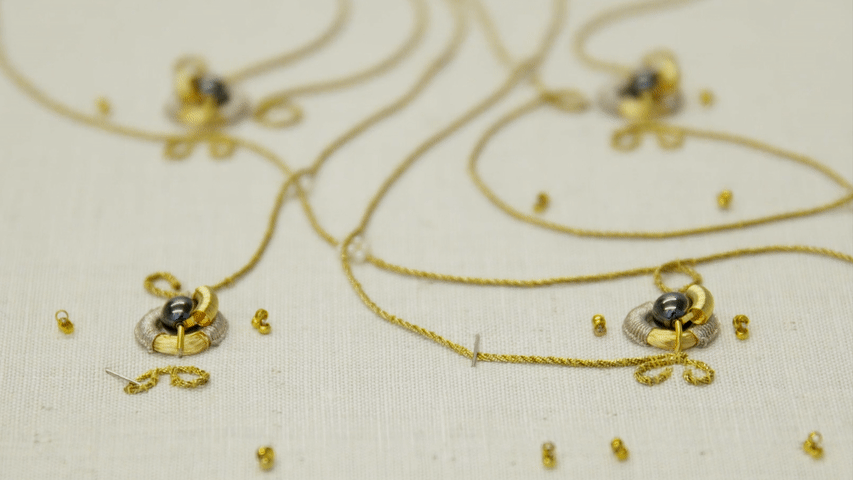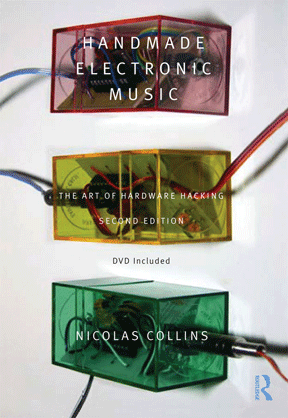10. Implications and applications#
This week was all about learning about ultra personalised product service systems, and figuring out what we want to work on for our final projects. In practice I spent a lot of time thinking about things I like, problems I want to solve, and trying to fit all those together
My plan#

The loose plan I’ve landed on is to design and build an e-textile modular synthesizer.
(My diagram is heavily inspired by this wonderful history-of-electronic-music-mapped-onto-a-theremin-circuit-diagram. And my diagram needs a bit of work, but this is at least the first draft!)
But why?#
Synth building makes electronics make sense#
I have a some experience with building very simple DIY synthesizers (plus a number of friends who either build synths, or are professional musicians using synths in their work), and I think that synth building is a fun and compelling way to make electronics, and the underlying maths and physics, accessible and tangible.
Also…I love synthesizers.
I don’t love synthesizers quite as much as Legowelt, but you get the idea.
Also, making a modular synthesizer means I can create a core set of modules, and add to that depending on what I have time for :)
Referencing the (often hidden) influence of women in history#
Electronics, physics, maths and audio engineering are all male-dominated fields. And it’s often the case that women’s contributions to these fields are forgotten about or erase (yep, I need some citations to back this statement up - they’re coming!).
I’m particularly thinking of electronic music pioneer Daphne Oram, who co-founded the BBC Radiophonic Workshop and developed the Oramics Machine, a device for turning drawings into sound. Here is an ad for a washing machine company that she made the soundtrack for with the Oramics Machine, which must be the most pleasing washing machine ad of all time.
New interfaces are interesting#
I’m really interested in e-textiles because of the potential for designing new, soft, interfaces. There are a lot of ways to make electronics wearable - designing circuitboards to have large holes for sewing them into fabric, for example - but what’s more interesting to me is how we can reinvent traditional components rather than just adapting them, like using conductive thread and fabric rather than sewing wires into clothing. I’m hoping to do more research into this as part of my project ◕◡◕
E-textiles are a powerful hook for getting women into electronics#
Now, I’m definitely not saying that you have to make electronics ‘soft’ for women to be into it (not true, not true at all). But e-textiles was my own gateway into the broader world of electronics, and I think this is true for other women as well.
But how is it personalised?#
The goal for my project is that it will be:
- An instrument that can be used to make music
- An interactive object that can be displayed to the public, or borrowed by various people, to interact with and learn about electronics
- An open source design that will be available for others to replicate
- A series of tutorials for beginners in electronics to make at home / in their schools / etc etc
- A prompt for telling stories about women’s influence in electronics and other technical fields.
I still need to map out user journeys to demonstrate how different types of user can interact with my project!
Research#
This is how my week actually went.
Gathering inspiration#
I started the week like this:
I knew that there are several things I’m really into, and want to incorporate into my final project:
- E-textiles
- Modular design
- Tessellations and geometric patterns in general
And I like making things that:
- Have a feminist message
- Interpret / display scientific data in new ways
- Explain or illustrate abstract concepts in mathematics and physics.
I decided to make a pinterest board of projects I like, concepts I find interesting, and aesthetics that appeal to me.
At this point I started to feel like there were too many things that I want to have in my project (to be honest I still feel a bit like this).
Refining my ideas#
I picked two projects I really like, which represent two (slightly) different directions my project could take:
- the Embroidered Computer by Irene Posch and Ebru Kurbak

I like this project a lot because it - Reinvents traditional circuitry in soft materials - Makes visible the processes by which a computer…computes (ಠ‿ಠ)
- Cosmic Bitcasting by Afroditi Psarra
And this one I like because it - Takes something that’s traditionally large and bulky (a particle detector) and makes it wearable - Collects and displays real physical data
I think it goes without saying that both projects are also aesthetically very beautiful (∪ ◡ ∪)
I used these two projects as the basis for conversations with friends, classmates, and anyone who happened to be near me, to explore whether I’m more interested in:
- a project that focuses on the fundamentals of computing, and tries to replace as much hard circuitry as possible with soft materials
- a project that is more sophisticated in terms of function, or is able to collect / store / visualise real data.
This is a question I still haven’t fully answered, but I figure that’s something I can refine over the coming weeks.
Focusing on synthesisers#
After a lot of thinking and gathering ideas, I returned to a previous project I made a few years ago - a playable map of the solar system. In short, touching the planets makes them light up and play a note, and the distance between the notes is scaled to the distance between the planets. This means that by touching the planets, you can really get a sense of how the inner planets are clustered quite close together, while the outer planets are really really really far away from each other.

I did not document this project particularly well :)
In the years since making this project, I’ve wanted to re-make it, and make it into a proper synthesizer (rather than an Arduino-powered instrument that plays just a couple of notes). Thinking about this made me remember how much I like synthesizers, and how much I believe in the potential of synth building to explore and explain maths and electronics.
So while I would like to include some kind of astrophysics element in my project, I think that exploring maths and electronics through a synthesizer interface is going to be more where it’s at.
Prior work#
Here are a couple of examples of other work that I’m inspired by:
Lilytronica by Afroditi Psarra: an e-textile synthesiser using a Lilypad Arduino.
Little Bits is a modular electronics kit range that is super nicely designed, and they have a great synth kit that was made in collaboration with Korg:
Both of these examples are super nice, but what I think I can add to them is to make more clear how the different synthesizer components / modules work.
Handmade Electronics Music by Nicolas Collins: last year I was lucky enough to be able to take part in a hardware hacking / noise making workshop by Nicolas Collins (here’s an Instagram post I made with a bunch of videos). This book is basically the bible of DIY audio electronics.

Miscellaneous Inspiration#
The look and sound of this short animated film - The Fisherman by Luke Saunders - is wonderful and I want to live in this world:
Look Mum No Computer is an energetic young man who makes crazy and creative DIY synths, who I had the pleasure of running a workshop with last year as part of the SOUND CHECK exhibition at Science Gallery Dublin.
Utopia is one of my all-time favourite TV shows, with an amazing synth-y soundtrack by Cristobal Tapia de Veer, a technicolor aesthetic and a weird and wonderful sci-fi storyline:
The computer in the Netflix show Maniac is such a great design and character:
Forrest M Mims III’s book Getting started with electronics is a classic and well-loved text on basic electronics, including diagrams for 100 different circuits. I will probably use and adapt some of his circuits in my soft synthesizer, including the classic simple DIY synth: the Atari Punk Console:
Reading and testing and talking#
I’m compiling a list of research papers to read about engaging young women with electronics and computer science - if you’re making a project that’s aiming to solve a problem, it’s important to understand that problem properly!
I also hope to run workshops / testing sessions with schools and youth groups in Dublin and Amsterdam that I’ve worked with in the past.
And, I’m planning to make use of friends and people I’ve worked with in the past to get their advice and feedback. This is a list for future Jessica to remember who she needs to talk to:
- Niamh (science teacher)
- Mairead (informal science education / traditional Irish musician)
- Fia, Davy, Ben, SJ (musicians)
- Fia (musician and sound engineer)
- Sam (runs a choir / advocate for accessibility of music)
- Becky (e-textiles)
- Tara (designer / researcher in women’s access to makerspaces)
- Ash (engineer, synth builder)
- Oguzhan (retro gaming / electronics)